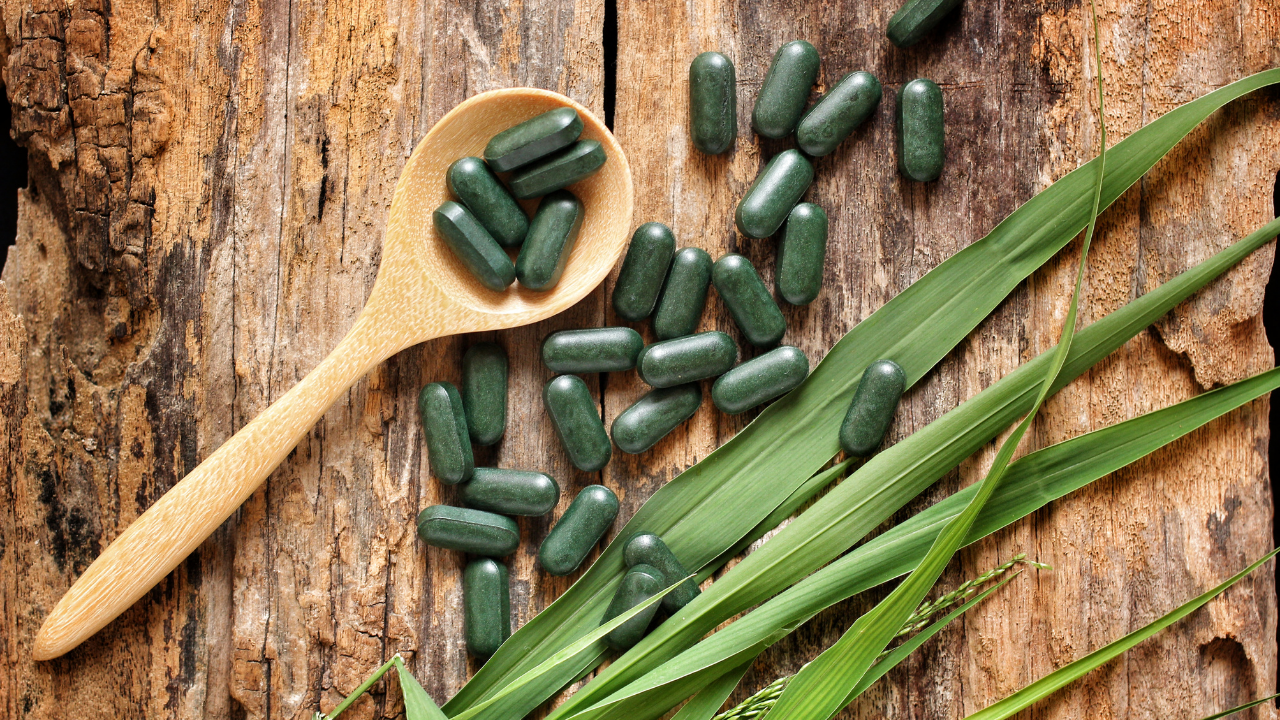Why Chlorophyll is a Major Contributor in Reducing Anxiety
Feb 01, 2021
My absolute favorite supplement in the world is chlorophyll—the green pigment in plants—and I wish every human being were consuming it on a daily basis. Chlorophyll is a compound found in dark leafy greens like kale, spinach, collard greens, dandelion greens, and turnip greens, broccoli and broccoli sprouts, and blue-green algae, like chlorella and spirulina. Although I feel that chlorophyll has been understudied, it has been shown to have many health benefits. This is one of the best health hacks we have available to us! A lot of high-performance people have discovered its value already.
It is noteworthy that chlorophyll contains magnesium, which we know helps to reduce anxiety. People with low magnesium intake are likely to experience anxiety. What are the other benefits? Chlorophyll reduces inflammation in the body. It has been shown to enhance oxidative stress tolerance; meaning, your body will be able to adapt to stressful conditions easier. It also contains a lot of healthful antioxidants.1
Chlorophyll helps put fresh oxygen into the body, which gives us instant energy. The chemical structure of the molecule of chlorophyll in a plant is similar to the chemical structure of the molecule of hemoglobin in the human bloodstream, which carries oxygen to our cells. The difference is that chlorophyll is made up of magnesium rather than iron, like red blood cells. Chlorophyll also helps to prevent blood sugar from dropping, which can help stop us from impulsive eating when our sugar level is low.
Because chlorophyll has so many antianxiety properties, it should be consumed daily. Luckily, you consume chlorophyll every time you eat a green vegetable, have a leafy salad, or drink a Super Greens Juice. If you are not consuming these foods, a supplement can effectively provide your body with chlorophyll.
You can buy chlorophyll in liquid or capsule form. I prefer the liquid because when we drink it in water or smoothies, it’s penetrating immediately into the body, bypassing the digestive tract. A supplement in pill form can take longer to hit the system and do its work.
Perhaps surprisingly, chlorophyll does not have any taste; however, it turns the water a vibrant deep green color and will stain your tongue—and your clothes, if you spill it. Because of its dark green tint, I use chlorophyll as a food dye, as do many other natural-food chefs. It’s a nontoxic colorant for things like green frosting on a dessert.
Drinking chlorophyll water is something I have committed to doing daily for the rest of my life—and I’ve done so for more than 10 years. I find this the easiest way to consume it. When I drink chlorophyll water, I like to imagine that I am putting a coating over my cells to protect them from oxidative stress and toxins. Sometimes I visualize myself as a superhero and chlorophyll as my cape. I tell my coaching clients that if they regularly drink alcohol or eat unhealthy food, to have chlorophyll water after to help detox the body. Simply add the number of drops recommended on the label to a full glass of water, and drink up!
Here is a brand I use:
P.S I want to make my own brand without a preservative, it's a goal!
This is an excerpt from my latest book, Anxiety-Free with Food. To read more about this topic, get the book HERE.

Resource:
1. E. Wang and M. Wink. “Chlorophyll Enhances Oxidative Stress Tolerance in Caenorhabditis elegans and Extends Its Lifespan,” PeerJ, vol. 4 (April 7, 2016), p. e1879, doi: 10.7717/peerj.1879.


